
How to Use GPS NEO 6M : Examples, Pinouts, and Specs
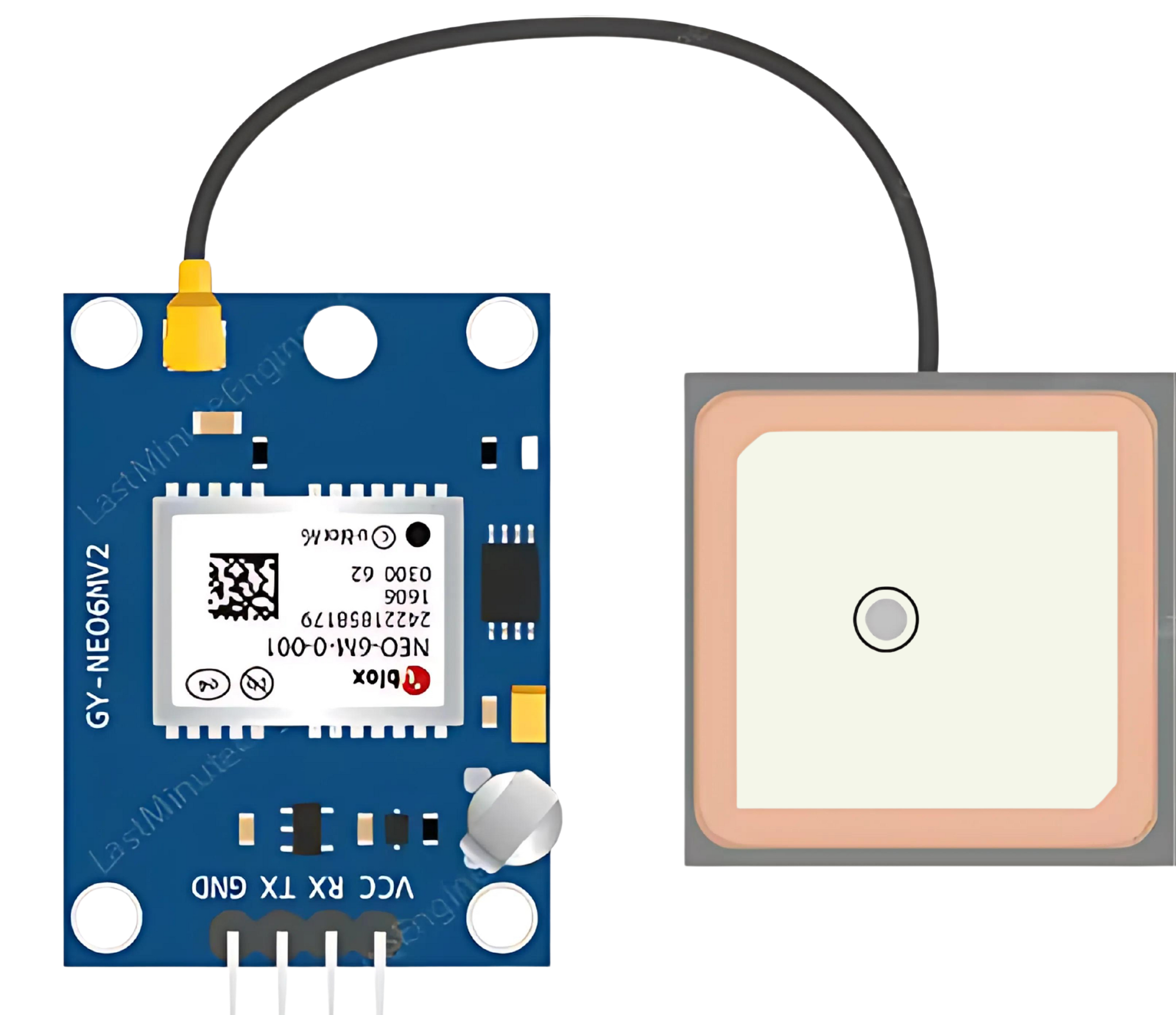
 Design with GPS NEO 6M in Cirkit Designer
Design with GPS NEO 6M in Cirkit DesignerIntroduction
The GPS NEO 6M module is a compact, high-performance GPS (Global Positioning System) receiver with an integrated NEO-6M GPS chip that provides accurate positioning and navigation information. This module is widely used in various applications such as vehicle tracking systems, asset tracking, personal navigation devices, and drones.
Explore Projects Built with GPS NEO 6M
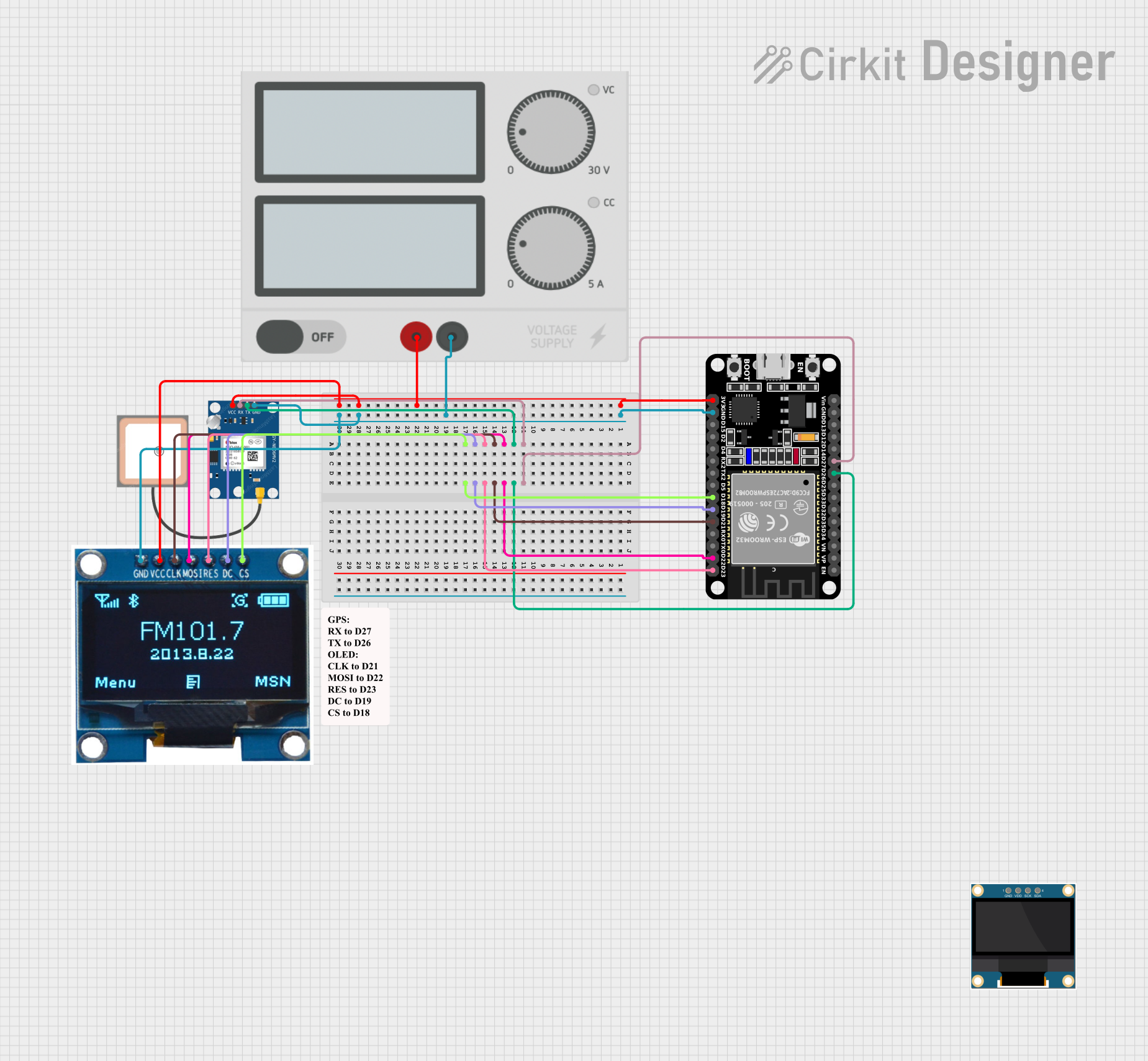
 Open Project in Cirkit Designer
Open Project in Cirkit Designer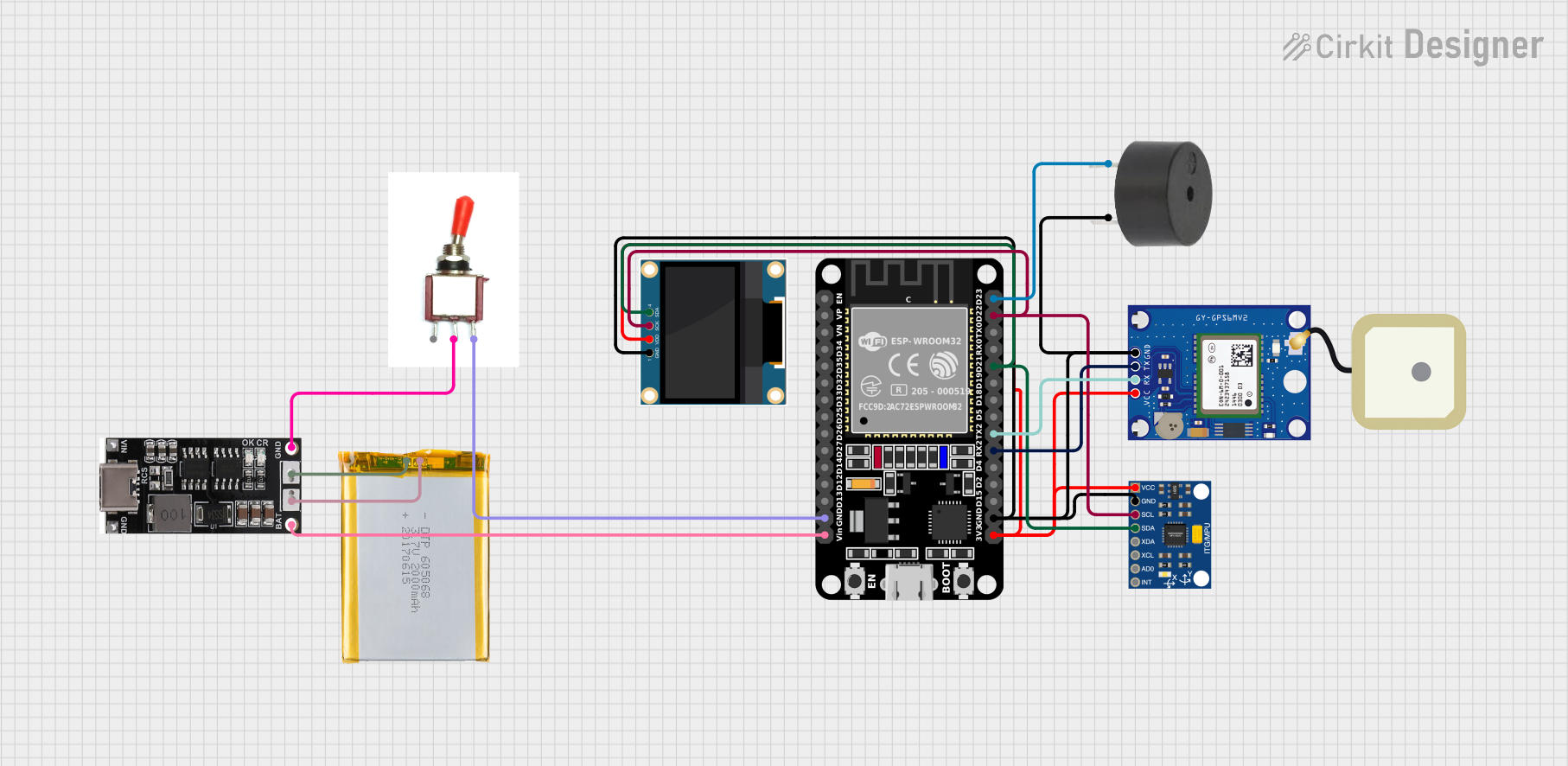
 Open Project in Cirkit Designer
Open Project in Cirkit Designer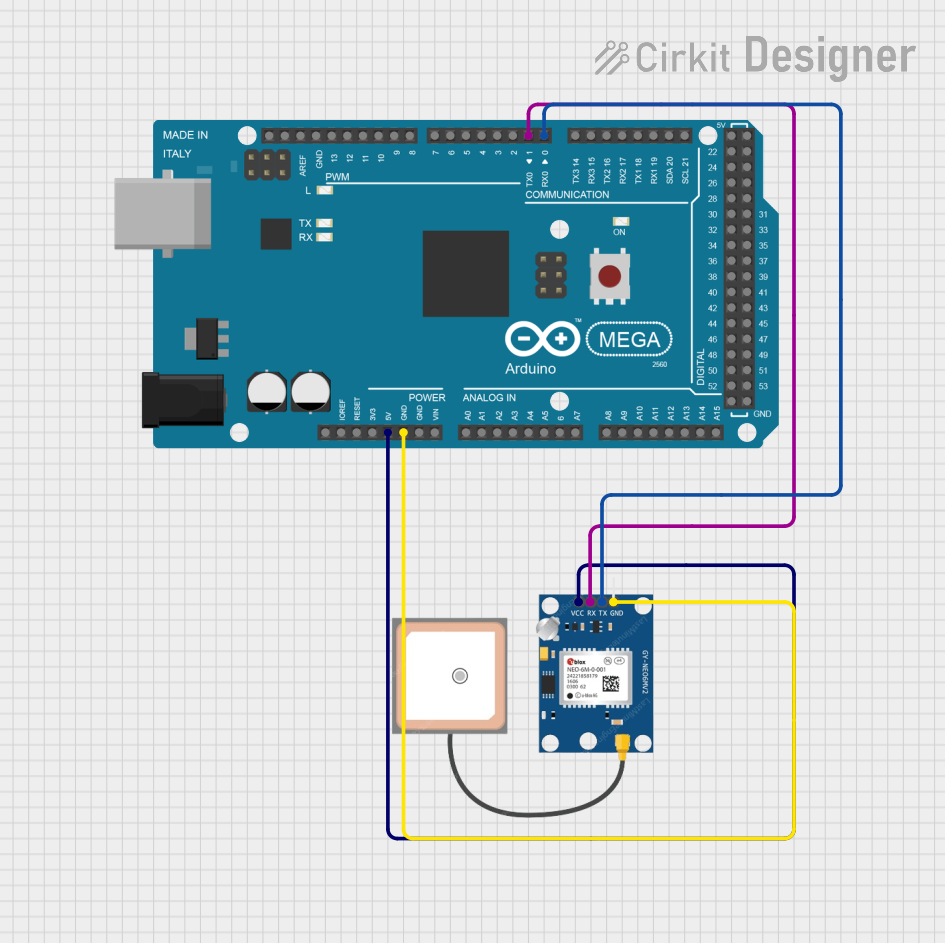
 Open Project in Cirkit Designer
Open Project in Cirkit Designer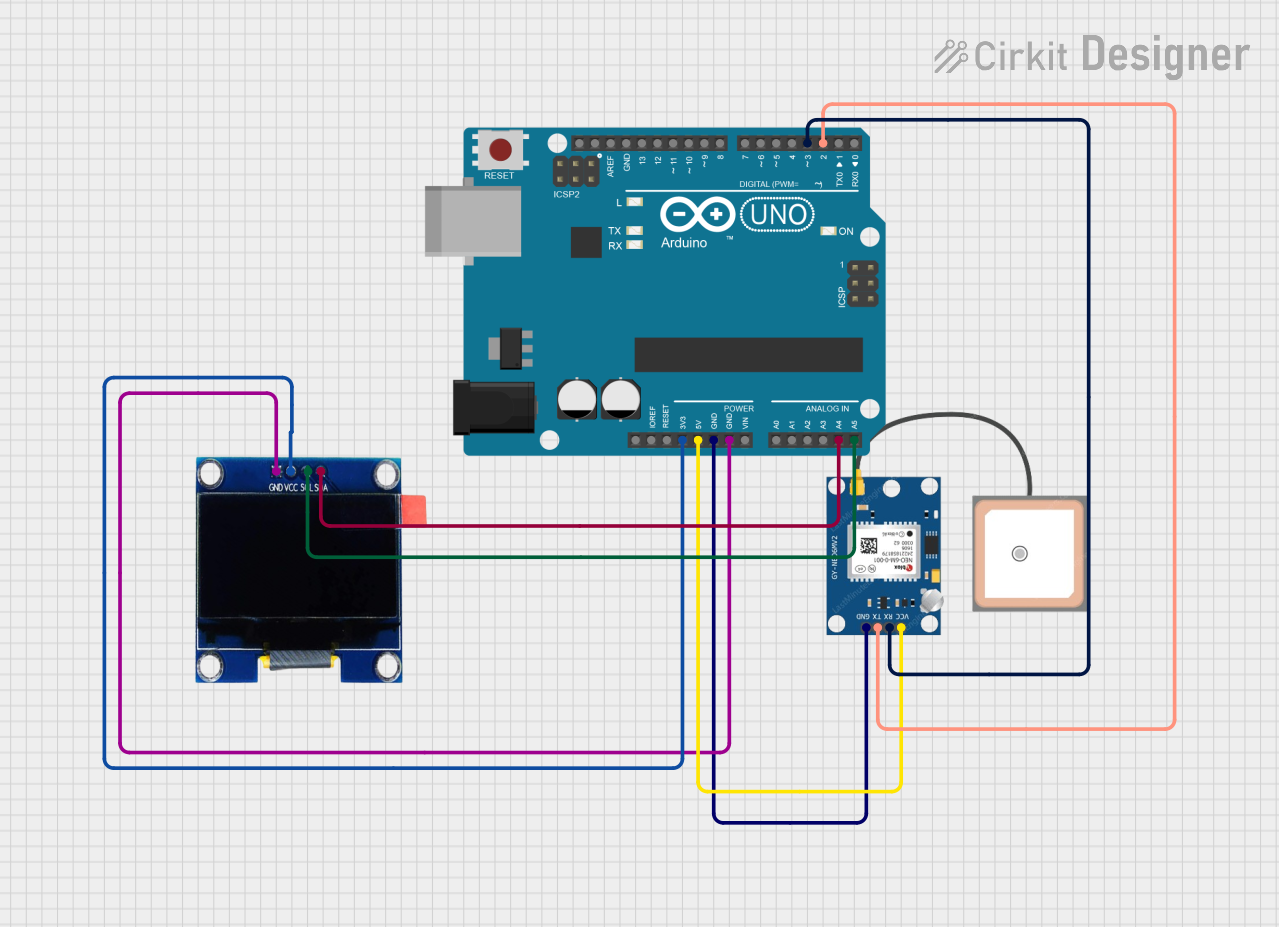
 Open Project in Cirkit Designer
Open Project in Cirkit DesignerExplore Projects Built with GPS NEO 6M

 Open Project in Cirkit Designer
Open Project in Cirkit Designer
 Open Project in Cirkit Designer
Open Project in Cirkit Designer
 Open Project in Cirkit Designer
Open Project in Cirkit Designer
 Open Project in Cirkit Designer
Open Project in Cirkit DesignerCommon Applications and Use Cases
- Vehicle navigation and tracking
- Asset tracking
- Personal navigation and fitness devices
- Geocaching
- UAVs and drones for geolocation
Technical Specifications
Key Technical Details
- Receiver Type: 50 Channels, GPS L1 frequency, C/A Code
- Position Accuracy: 2.5 meters CEP (Circular Error Probable)
- Update Rate: Up to 5 Hz
- Acquisition Times: Cold starts: 27s (typ.), Hot starts: 1s (typ.)
- Sensitivity: Tracking & Navigation: -161 dBm
- Operating Voltage: 3.3V to 5V DC
- Power Consumption: 50mA (typical)
- Communication Interface: UART TTL (Serial)
- Operating Temperature: -40°C to 85°C
Pin Configuration and Descriptions
| Pin Number | Name | Description |
|---|---|---|
| 1 | VCC | Power supply (3.3V to 5V DC) |
| 2 | GND | Ground connection |
| 3 | TX | Transmit pin for UART communication |
| 4 | RX | Receive pin for UART communication |
| 5 | PPS | Pulse Per Second (optional, not always used) |
Usage Instructions
How to Use the Component in a Circuit
- Power Connection: Connect the VCC pin to a 3.3V or 5V power supply and the GND pin to the ground.
- Data Connection: Connect the TX pin of the GPS module to the RX pin of the microcontroller and the RX pin to the TX pin.
- Antenna: Ensure the GPS module's antenna has a clear view of the sky for optimal performance.
Important Considerations and Best Practices
- Power Supply: Ensure that the power supply is stable and within the specified voltage range.
- Serial Communication: Configure the microcontroller's UART interface to match the GPS module's default baud rate (usually 9600 bps).
- Antenna Placement: Place the antenna away from large metal objects and electronic devices that may cause interference.
- Warm-Up Time: Allow the module a few minutes to warm up and acquire satellites upon initial power-up.
Example Code for Arduino UNO
#include <SoftwareSerial.h>
// Create a SoftwareSerial port
SoftwareSerial gpsSerial(3, 4); // RX, TX
void setup() {
// Start the serial communication
Serial.begin(9600);
gpsSerial.begin(9600);
Serial.println("GPS NEO 6M test");
}
void loop() {
// Check if data is available to read
if (gpsSerial.available()) {
char c = gpsSerial.read();
Serial.write(c); // Print the GPS data to the Serial Monitor
}
}
Troubleshooting and FAQs
Common Issues Users Might Face
- No Data Output: Ensure the antenna has a clear view of the sky and the module has had sufficient time to acquire satellites.
- Garbled Data: Check the baud rate settings and wiring connections between the GPS module and the microcontroller.
- Inaccurate Position: Make sure the antenna is not obstructed and the module is stationary for initial position fixing.
Solutions and Tips for Troubleshooting
- Power Cycle: If the module is not responding, try power cycling the module.
- Check Connections: Verify all connections are secure and correct.
- External Antenna: If the signal is weak, consider using an external antenna with a clear view of the sky.
FAQs
Q: How long does it take for the GPS NEO 6M to get a fix? A: It typically takes 27 seconds for a cold start and 1 second for a hot start.
Q: Can I use the GPS NEO 6M indoors? A: GPS signals are weak indoors. It's recommended to use the module outdoors or near a window.
Q: What is the default baud rate of the GPS NEO 6M? A: The default baud rate is usually 9600 bps.
Q: How can I change the update rate of the GPS module? A: The update rate can be changed using UBX protocol commands, which are beyond the scope of this basic documentation. Please refer to the module's datasheet for advanced configurations.